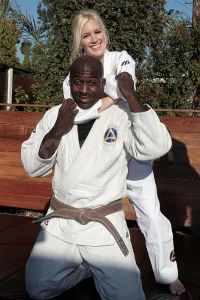Nobody karate chops me on the street anymore.
Once upon a time, this was the standard response to meeting someone with a martial arts interest: yelp a few times, wave your arms around, do a judo/ninja/karate chop, then hold for applause. But times have changed. People no longer believe televised ninja movies are real. Now they believe televised MMA competitions are real, and nobody uses a karate chop in the UFC. (It’s illegal to strike the trachea, in case you were wondering.)
Don’t get me wrong–I’m not complaining. The classic ninja pantomime has given way to more intelligent comments and questions, such as, “Have you won any tournaments?”
Common sense dictates that the best martial artists are those who win tournaments, while the middling ones participate and lose, and the worst avoid competition altogether. This is only half-true, but the issues are too complex to address during small talk. So, until now, I have answered the question with a simple No, and endured a stigma otherwise reserved for the tea-sipping pajama dancer with delusions of lethality.
Let this be my catharsis. There are perfectly good reasons to abstain from tournament competition, and they deserve an airing. So here we go…


 Introduction
Introduction

